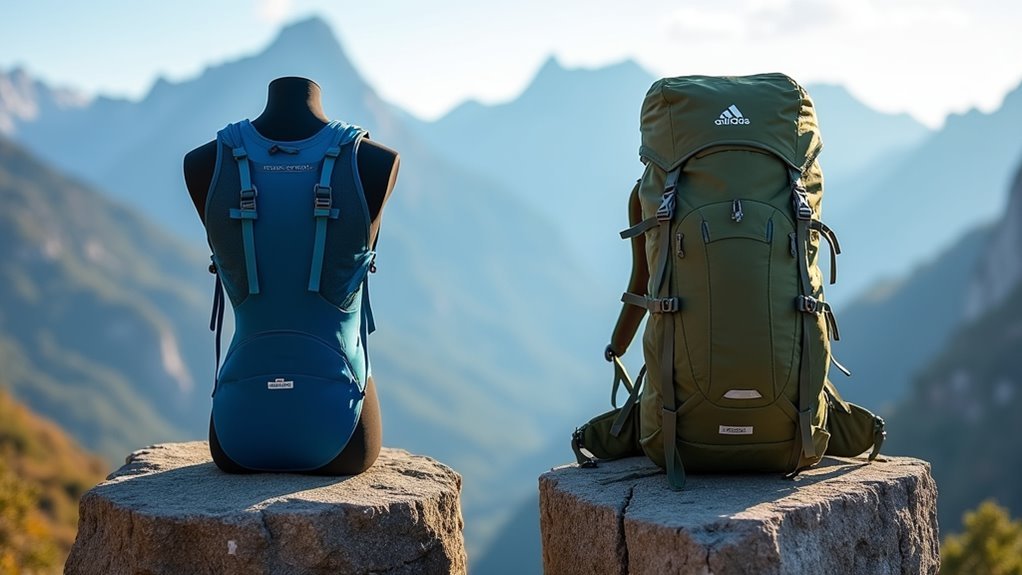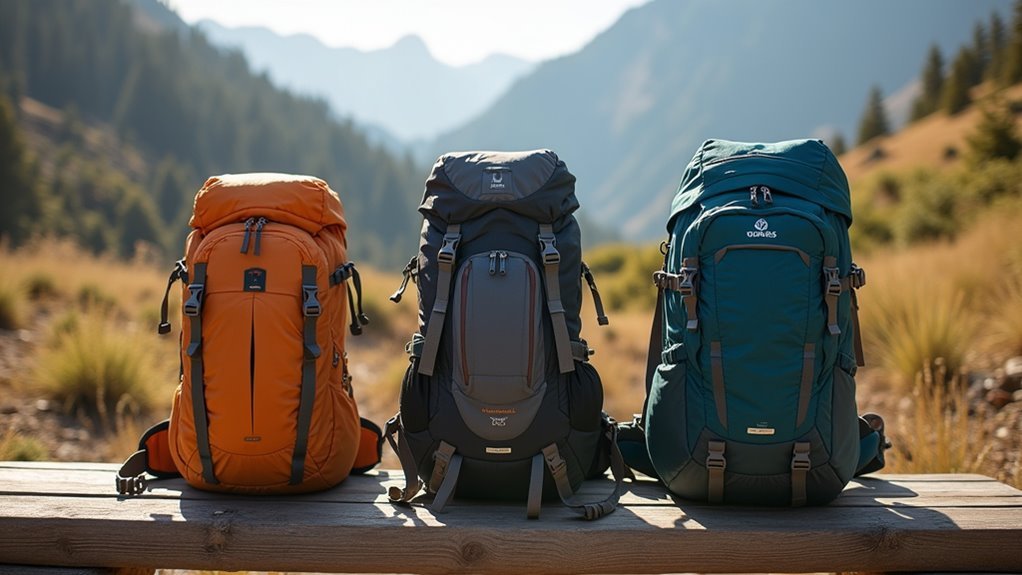I’ve spent countless hours on trails with both internal and external frame backpacks strapped to my shoulders, and I can tell you – choosing between them isn’t just about looks. The right frame determines whether you’ll conquer that mountain in comfort or struggle with every step. Your back, shoulders, and hiking style all factor into this vital decision. Ready to discover which pack will transform your next adventure from bearable to unforgettable?
Comparing Internal Vs External Frame Backpacks

How do you choose between internal and external frame backpacks when both seem to offer compelling features?
I’ve been there, struggling with this exact dilemma! Internal frames hug your body closely, offering stability on challenging terrain and a streamlined profile that’s perfect for traversing tight spaces.
Meanwhile, external frames excel at distributing heavy loads, keep your back cooler with that air gap, and typically cost less.
Your choice ultimately depends on your adventure style—whether you’re tackling technical trails or carrying heavier gear on established paths.
Key Features That Define Your Packing Experience

When exploring the world of backpacks, certain features will dramatically shape your entire packing and carrying experience. I’ve found that understanding these elements helps you choose a pack that feels like it was made just for you!
| Feature | Impact on Your Journey |
|---|---|
| Weight Distribution | Internal frames hug your body; external frames shift weight to hips |
| Ventilation | External frames offer better airflow against your back |
| Storage Organization | External frames provide more compartments for easy access |
These differences aren’t just technical details—they’re the difference between a comfortable adventure and a painful slog through the wilderness.
Weight Distribution and Comfort Analysis

Although both frame styles will get your gear from point A to point B, the way they distribute weight creates entirely different comfort experiences on the trail.
The frame you choose doesn’t just carry gear—it shapes your entire wilderness experience through weight distribution.
I’ve found that external frames excel at transferring weight directly to your hips, giving your shoulders a much-needed break on long hauls.
Meanwhile, internal frames hug your body like a friend, keeping you balanced on uneven terrain.
Your back might sweat more with an internal frame, but you’ll appreciate the stability when scrambling over rocks.
Trust me—choosing the right distribution system can make the difference between an enjoyable journey and counting down the miles.
Choosing the Right Frame for Your Adventure Type
The perfect backpack frame isn’t universal—it depends entirely on your adventure style. I’ve learned through countless trips that matching your frame to your activity makes all the difference in comfort and enjoyment.
| Adventure Type | Internal Frame | External Frame |
|---|---|---|
| Day Hiking | Excellent | Good |
| Backpacking | Very Good | Excellent |
| Technical Trails | Excellent | Poor |
| Heavy Loads | Good | Excellent |
| Travel/Flying | Excellent | Poor |
When you’re climbing steep terrain, I’d recommend an internal frame that hugs your body closely. But if you’re carrying heavy gear on established trails, an external frame will distribute weight better across your hips.
Conclusion
I’ve learned that backpack choices are like choosing hiking partners—some hug you tight on treacherous paths, while others give you space to breathe under heavy loads. On my Appalachian Trail section hike, my internal frame became an extension of myself through rocky scrambles, while my trail buddy’s external frame carried his gear like a steadfast mule. Whatever your adventure calls for, there’s a perfect frame waiting to support your journey.